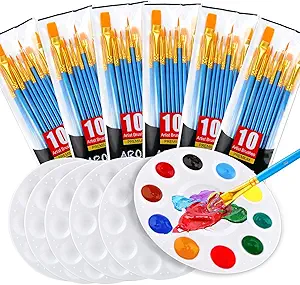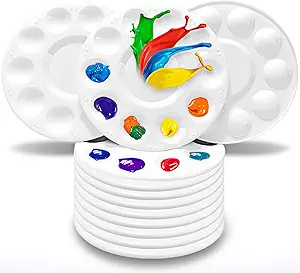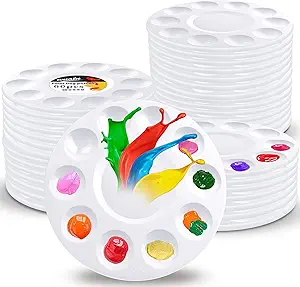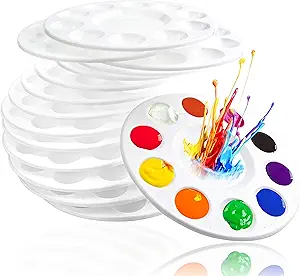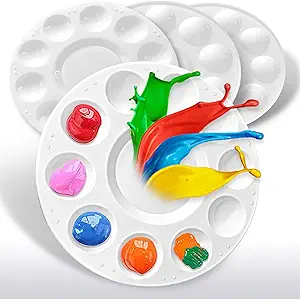The Ultimate Buying Guide for Paint Palettes: Types, Key Considerations, Features, Prices, Tips, and FAQs
Overview
A paint palette is an essential tool for artists of all levels. It is used to mix colors and create a range of hues for painting. With so many options available on the market, it can be overwhelming to choose the right one. In this buying guide, we will take a closer look at the different types of paint palettes, key considerations when making a purchase, important features to look for, prices, tips, and frequently asked questions.
Types
1. Plastic Paint Palette: This is a popular choice for beginners and those on a budget. It is lightweight, easy to clean, and comes in a variety of shapes and sizes.
2. Wooden Paint Palette: A wooden paint palette is a more traditional option that is preferred by many professionals. It is durable, has a natural feel, and can be used with both oil and acrylic paints.
3. Portable Paint Palette: If you like to paint on-the-go, a portable paint palette is a great option. It is compact, lightweight, and often comes with a lid to keep your paints secure during transport.
4. Non-Stick Paint Palette: A non-stick paint palette is perfect for those who use heavy-bodied paints like oils or acrylics. It makes cleaning up a breeze and prevents the paint from drying out too quickly.
Key Considerations
1. Size: Consider the size of the palette you need based on the type of painting you will be doing and the amount of paint you will be using.
2. Material: Choose a material that suits your needs and preferences, such as plastic, wood, or ceramic.
3. Shape: The shape of the palette can affect how you mix your colors and how easy it is to clean.
Features
1. Mixing Wells: Look for a palette with ample mixing wells to allow for a range of color mixing.
2. Lid: A palette with a lid can keep your paints fresh and prevent them from drying out.
3. Non-Slip Surface: A non-slip surface can help keep your paints in place while you work.
Prices
Paint palettes come in a range of prices, from under $5 for a basic plastic palette to over $50 for a high-quality wooden palette. Consider your budget and needs when choosing a paint palette.
Tips
1. Clean your palette after each use to prevent colors from mixing and drying out.
2. Use a palette knife to mix your colors instead of your brushes to prevent contamination.
3. Choose a palette with a lid to keep your paints fresh between painting sessions.
FAQs
Q: What is the best material for a paint palette?
A: The best material for a paint palette depends on your needs and preferences. Plastic palettes are lightweight and easy to clean, while wooden palettes have a more natural feel and can be used with both oil and acrylic paints.
Q: How do I clean my paint palette?
A: Clean your paint palette with soap and water after each use. Use a palette knife to scrape off any excess paint before cleaning.
Q: Can I use the same palette for oil and acrylic paints?
A: Yes, you can use the same palette for both oil and acrylic paints, but it is important to clean it thoroughly between uses to prevent contamination.
Conclusion:
A paint palette is an essential tool for any artist, and choosing the right one can make a big difference in your painting experience. Consider your needs and preferences when choosing a paint palette, and look for features like ample mixing wells, a lid, and a non-slip surface. With the information in this guide, you should be able to find the perfect paint palette to suit your needs and take your painting to the next level.



